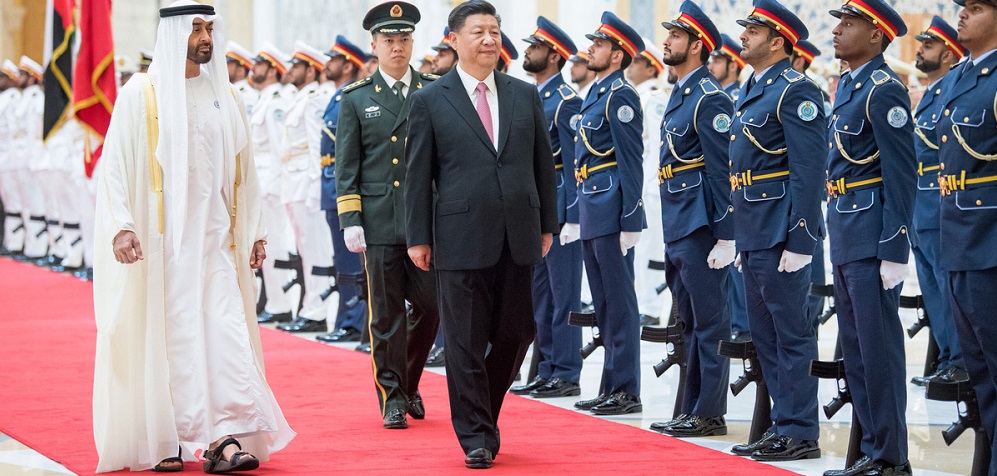Alwaght- The global stage in the second decade of the third millennium is a scene for the large-scale race for power and sway, with the heavyweights are challenging the established order to replace it with their desired one in a fierce competition with other actors.
When the Cold War ended, the US introduced itself as the global police force and the hegemonic power. Other powers, however, came along in the early 2000s to challenge this title of Washington. The game has expanded since Donald Trump became the US president last year. Embarking on the slogan of “Make America Great Again”, Trump waged a trade and diplomatic war against the challenging powers.
In the meantime, the US has a major challenger among others: China. According to the research centers, Beijing is the most important power endangering Washington’s global hegemony. Figures show that China will soon unseat the US as a top global power. The thriving Chinese economic and diplomatic relations with other countries bear witness to this reality.
In 2013, the Chinese leaders unveiled their plan to renew the ancient Silk Road under “One Belt, One Road Initiative.” The project eyes a heavy infrastructure investment program covering over 60 countries located along the ground and also “Maritime Silk Road.” The ambitious plan is aimed at using the huge financial potentials to transform into an economic superpower.
One of the regions that caught the attention of the Chinese leaders for this end is the Persian Gulf, particularly the UAE and Kuwait. Reports suggest that the Chinese-Emirati trade rose 15 percent in 2017 to reach $53 billion compared to the $46 billion in the year before. In the mid-July, China-Arab League economic forum, President Xi Jinping of China pledged $500 billion investment in Kuwait for the next two decades.
Over the past months, China stepped up its efforts to engage economically even further with the Arab states, showing that Beijing is seriously seeking to materialize its Silk Road Initiative. But what exactly China is looking for in the Arab countries? And what areas are under focus? On the other side, why do the Arabs welcome trade boost with Beijing? And can China replace the US as a strategic ally to the regional Arab states?
Energy and trade at the center
There is little doubt that China’s leading objective behind immense investment in the Persian Gulf is to later harvest economic interests and enjoy rich energy resources. Since the end of the Cold War, and particularly when the Arab League opened its first representation office in Beijing in 1993, China’s trade volume has been growing fast. The Asian heavyweight alone consumes 20 percent of the global energy. It consumes 10-11 million oil barrels daily, from which only some 4-5 million barrels are produced at home and the remaining are imported from abroad. The energy thirst necessitates the energy cooperation with the Arab states. The country imports nearly 51 percent of its oil from West Asia oil producers. The Arab states, Qatar and Yemen, provide China with 40 percent of its gas.
The energy sector is one part of the cooperation. The Chinese leaders also put a special focus on trade with West Asia. Statistical data hold that from 2005 to 2009, China bolstered its commercial exchange with the region by 87 percent, making it touch $100 billion. According to the Chinese data, this amount surged to $222 billion by 2012. More info note that the Asian economy is presently first export-import partner to Saudi Arabia and Oman and second to the UAE and Iraq.
But energy and trade are not the only areas where China meets the Arab nations. Investment is another crucial area. In 2008, the Chinese companies invested some $700 million in the Arab partners, which they also invested $400 million in the industrial power. The figures now talk about $240 billion Chinese investment. President Xi, addressing the Arab leaders in a recent forum, vowed the bilateral trade will hit 600 billion in the upcoming years.
The huge investment and trade are expected to facilitate launching the new Silk Road project. After re-election as leader of China, Xi in his first foreign visit traveled to the UAE on July 20 at the Emirati Crown Prince Mohammed bin Zayed Al Nahyan’s invitation. He emphasized that the Beijing-Abu Dhabi partnership is designed to grow within the “One Belt, One Road” initiative.
Arab states’ difficult road to strategic ties with Beijing
The relations with Beijing are economically developing fast. But can they also develop strategically? The answer is not hard to find. Traditionally, the Arab states fall under a US-dominated global front. They have always followed the US strategy diplomatically. The heavy presence of the US in them in form of military bases depicts that Washington is the most strategic partner of the West Asia’s Arab countries.
Such wide strategic ties with the Arab world does not allow the American leaders to simply let Beijing penetrate their exclusive position and perhaps take their place later. Some even suggest that Washington will not tolerate Beijing as a serious rival in this region. So, the Americans are expected to avoid turning a blind eye to the cooperation and will issue necessary warnings to their regional allies, and maybe indirectly to China. As a conclusion, a strategic level alliance with China faces severe hurdles. The regional countries, though disappointed with Trump’s blackmailing and negligence, will find it a hard work moving to a building a balance in their ties with both Beijing and Washington.



























